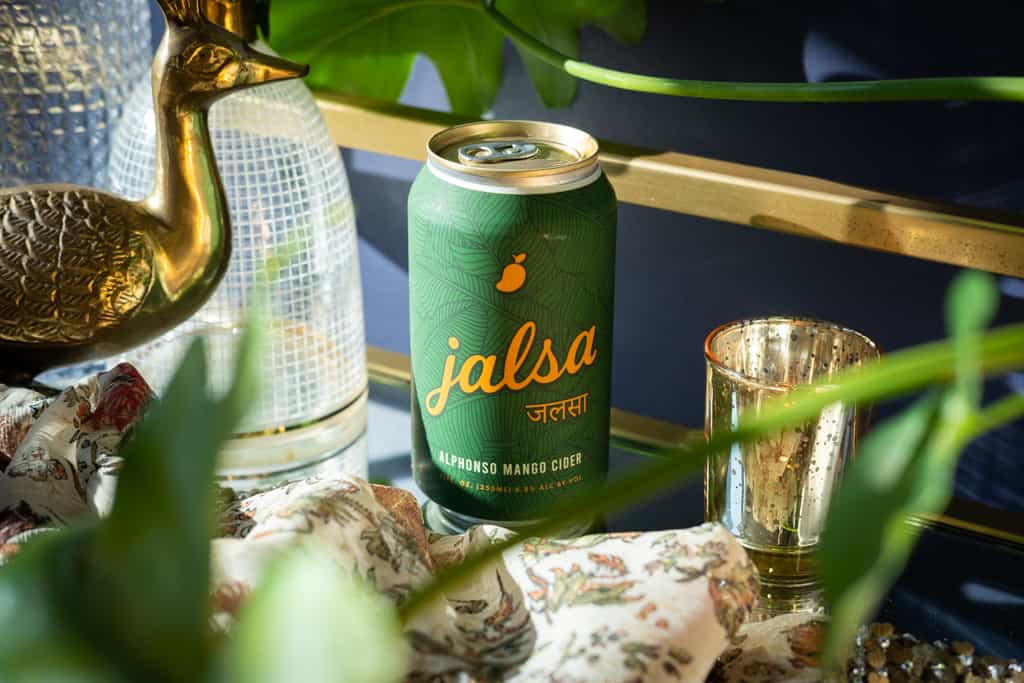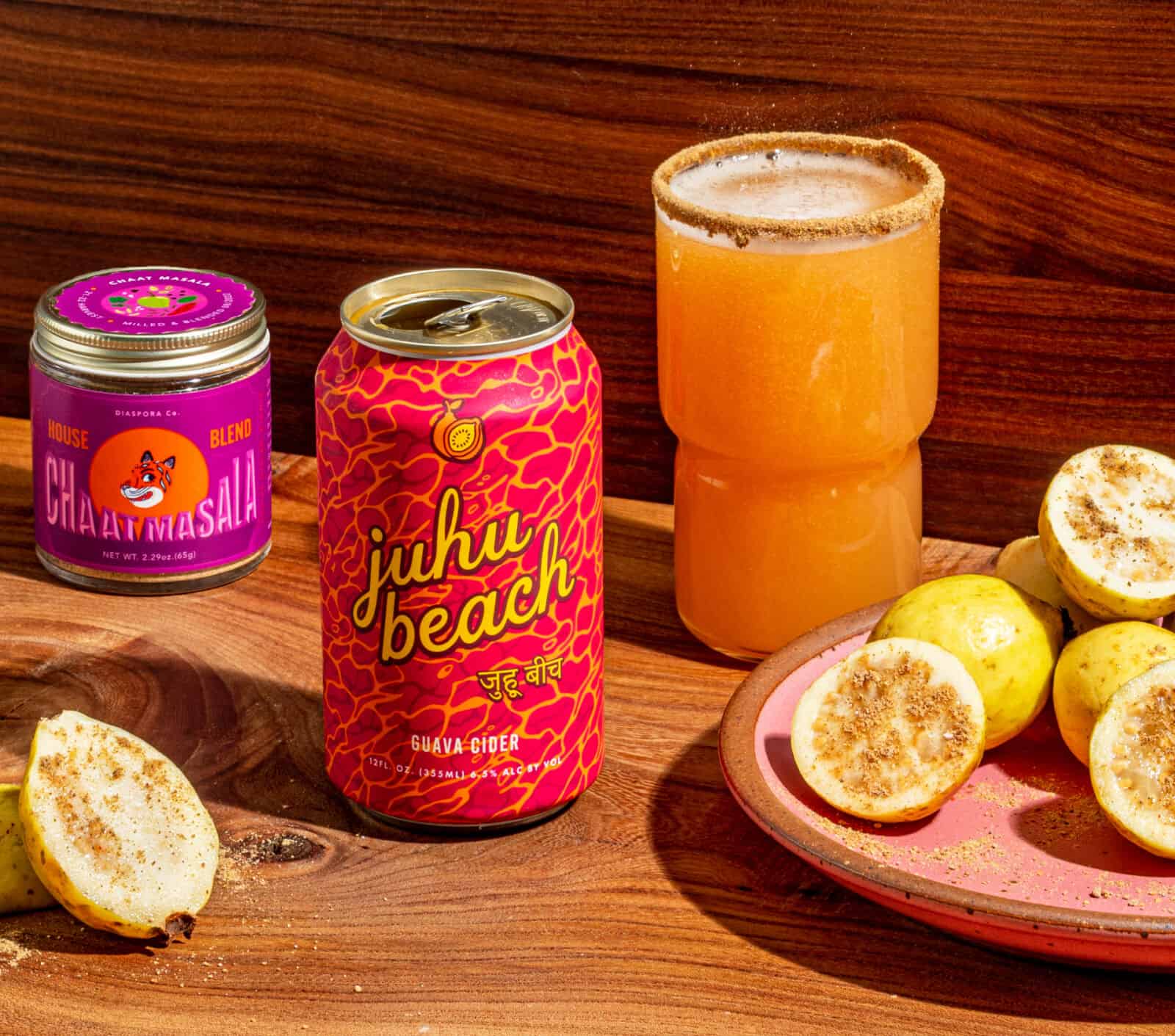For the decade that Artifact Cider Project has been in business, its co-founder Soham Bhatt has actively resisted making ciders with tropical adjunct flavors.
“For me, the goal of Artifact has been to create a sense of place around apples and the experiences around apples in the Northeast,” Bhatt says. “So, it felt sacrilegious to use ingredients from so far away.”
Artifact has used non-apple flavors in the past, but these have always nodded to the agricultural bounty in the area surrounding Florence, Massachusetts, such as cranberries, blueberries and maple syrup. But regional specificity isn’t the only reason Bhatt hasn’t gone near fruits from farther afield. As an Indian-American cidermaker, he says he’s felt a weird pressure from the beginning to make specifically a mango cider.
“I was wary of being pigeonholed as the Indian cidermaker who does ‘Indian’ things,” he notes. “If I ever did use mango in cider, I didn’t want it to be gimmicky or a cash grab. Anybody can put mango in a cider, but can you do it with meaning behind it?”
So, for his first 10 years making cider, Bhatt focused on apples, and made a name for Artifact while developing his skills as a cidermaker. Then, in 2022, he met New York-based Chef Chintan Pandya of Unapologetic Foods when they organized a cider dinner, and a spark of inspiration started to sizzle between them.
“Throughout the process of figuring out pairings, we came upon this idea of: Is there a concept of terroir in India, does that exist?” he remembers. “There isn’t much of an alcohol culture in India, but terroir can’t just be a concept in French wine.”
Bhatt and Pandya arrived together to an at least partial answer to this question. Mangoes are the official fruit of India, and they both realized that each region grows its own variety and claims theirs is the best. The national culinary fascination with “which mango varieties grow best where” reminded Bhatt of the conversations in cider around apple varietals. His family, which comes from Gujarat, on the west coast of India near Mumbai, always praised their regional mango, the Alphonso mango.
“So it felt like, here it is. I know the taste of Alphonso mangos, I’ve had these epiphany moments of tears coming to my eyes at how good they are, all the flavors that are not in the fruits we buy here in the US,” he says. “I wanted to make a mango cider that the world had never seen, and I thought, let’s put everything into it.”

Bhatt and Pandya decided to make a collaboration Alphonso mango cider, Jalsa, which means “celebration” in Hindi. The Artifact team went “full immersion” into Alphonso mangoes, sampling frozen Alphonso mango slices, sweetened and unsweetened puree, and soft drinks. Drinks, Bhatt says, are imbued with nostalgia for many Indians and Indian-Americans like himself.
“I made them eat mangoes in various stages of ripeness, the Indian way, where you scrape it with your teeth, which is a different experience than peeling it,” he says. “Once the team and I all had this concept of the entire flavor spectrum, we connected it with apples to find a harmonious middle-ground that could show off the varietal quality of the mango.”
In the end, Jalsa is a blend of four different components: a mango puree fermented with sugar and water to create a kind of mango wine; a mango/apple co-ferment; hard apple cider; and hopped cider. The hops role, Bhatt notes, is to emulate the experience one gets when scraping your teeth against the skin of a mango.
“Mangoes are an evergreen plant, and the skin can have a bitter, kind of pine sap quality to it,” he says. “The Southern Cross and Cascade hops we use add a similar aromatic quality, a slight bitterness and orange-y, piney bitter notes.”
Another collaboration cider that Artifact recently released is Juhu Beach, a guava cider that comes with a jar of chaat masala from Diaspora Co. Bhatt had been talking to the Diaspora team for awhile, looking for a collaboration opportunity that felt right. During one of his conversations with the brand’s founder and CEO, Sana Javeri Kadri, they realized that they shared a memory of going to Juhu Beach in Mumbai and eating guava slices with chaat masala sprinkled on them, bought from street food vendors.
“The light bulb went off!” Bhatt says. “So, instead of incorporating the spice into the cider, we decided to make a kit, where we instruct the drinker to either sprinkle a little of the chaat masala on top or rim their glass with it to get a very similar experience as having that snack in ethereal liquid form.”

To make the most “guava-y cider possible,” Bhatt and his team followed a production technique similar to their mango cider: guava wine blended with guava puree, guava-apple co-ferment and cider. They even chose a yeast that has guava-like esters.
“The connection in our Juhu Beach cider is not just about place and memory. Diaspora source spices from farmers to show people that spices can be better than what you mostly find in the store, and that connects to what Artifact is doing,” Bhatt says.
Since both ciders’ releases in December, Bhatt says there has been a positive response, including direct feedback from Indian-Americans and Indians.
“People of Indian descent have messaged us, which is exciting and different for us, we don’t generally do those kinds of orders online,” he notes. “I think some of that is also because of our collaborators, who are both bringing authentic parts of Indian food to the cider.”
Bhatt isn’t sure if the Jalsa and Juhu Beach will permanently convert these folks into full-time cider drinkers, but muses that maybe that’s not really the point.
“Yes it’s my goal to make the cider tent broader, but I’ve also always been interested in opportunities to show the versatility of ciders with foods from different communities,” he says. “The mango ciders is about varietal idiosyncrasies, seasonality and terroir, and the guava is more about nostalgia, sourcing and connecting directly with farmers.”
To learn more about Artifact Cider Co.’s products (or to buy online), including Jalsa and Juhu Beach, visit its website.
- Jalsa photo: Artifact Cider Co.
- Juhu Beach photo: Melati Citrawireja